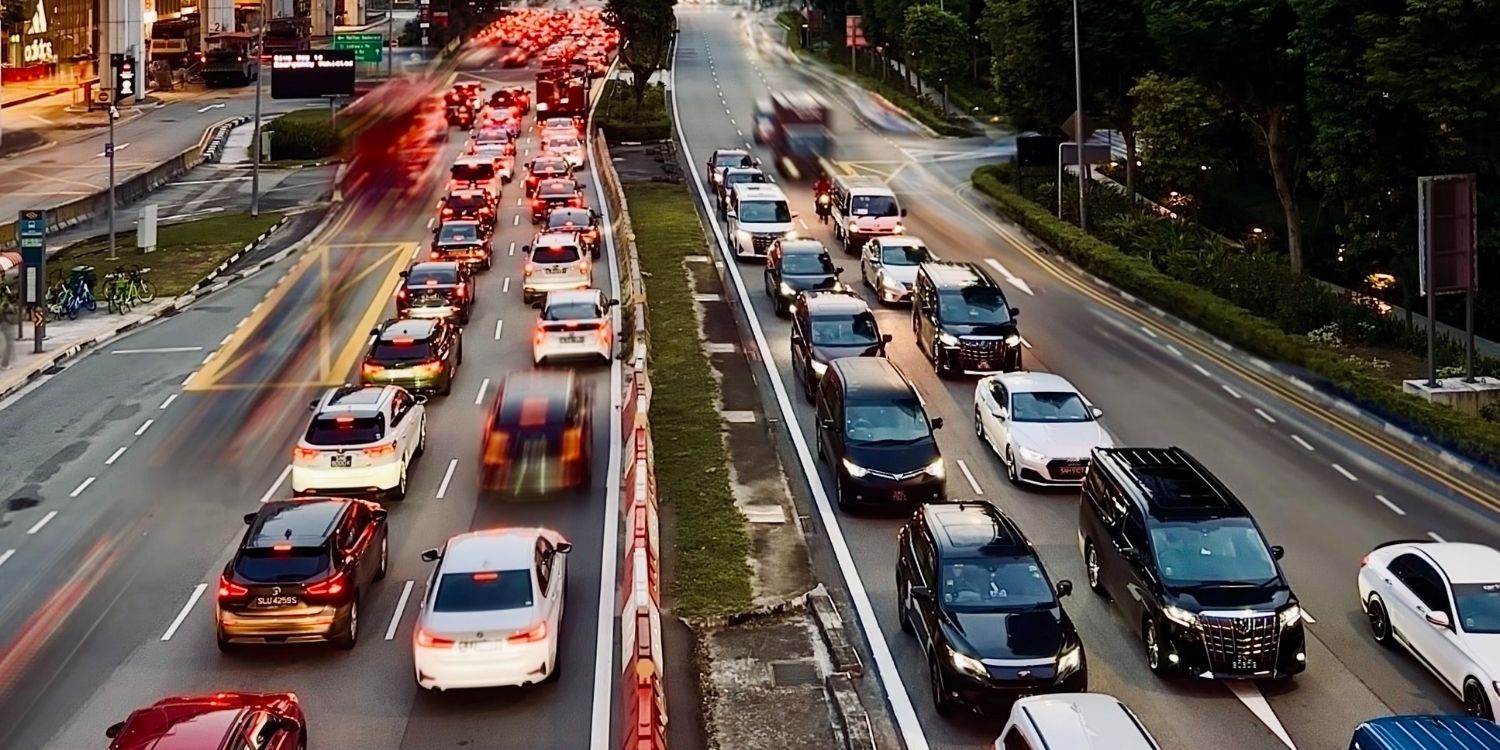This piece is part of MS Explains, a segment where we provide clarity to common or key topics, making them easier to digest.
Why Does COE Exist In Singapore & Is It Necessary?
EDITOR’S NOTE: A previous version of this article was last published on 1 June. It has been edited to reflect COE prices in the October bidding exercise.
–
In Singapore, individuals who’d like to own a car require a Certificate of Entitlement (COE) — essentially a significant premium on top of the car’s actual market value.
One may think this would deter buyers but Singapore residents are still buying cars despite rising COE prices.
Earlier this month, the COE premium for Open Category vehicles hit a record high of S$152,000.
According to the Land Transport Authority (LTA), however, Singapore’s car population is at its highest in a decade — with over 650,000 vehicles recorded in 2022.
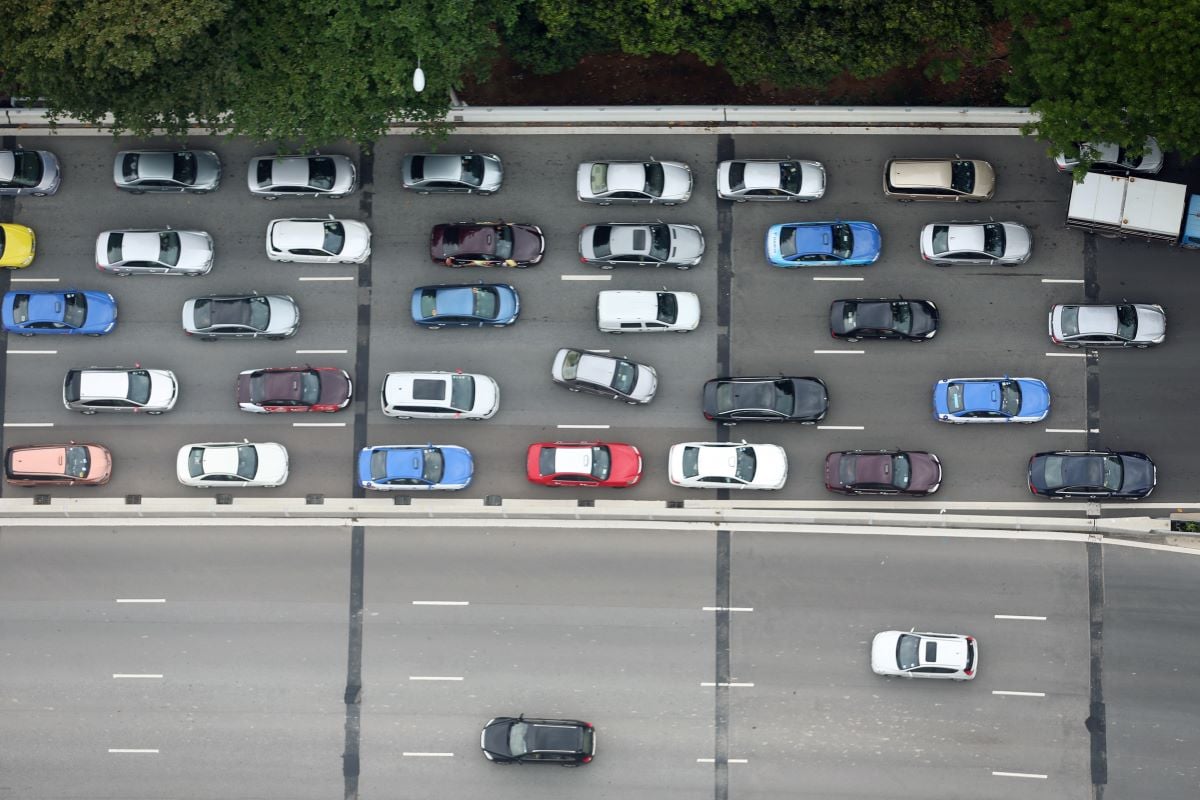
Source: Fortune
With the numbers rising, one may wonder how the COE actually works.
What is COE?
As its name suggests, the COE entitles an individual to own a motor vehicle in Singapore.
It’s absolutely mandatory for potential car owners to bid for a COE before registering a vehicle.
Unfortunately, securing a COE is not a simple task, neither is it affordable.
COE bidding exercises now happen twice a month and in recent years, aspiring car owners have been facing soaring premiums.
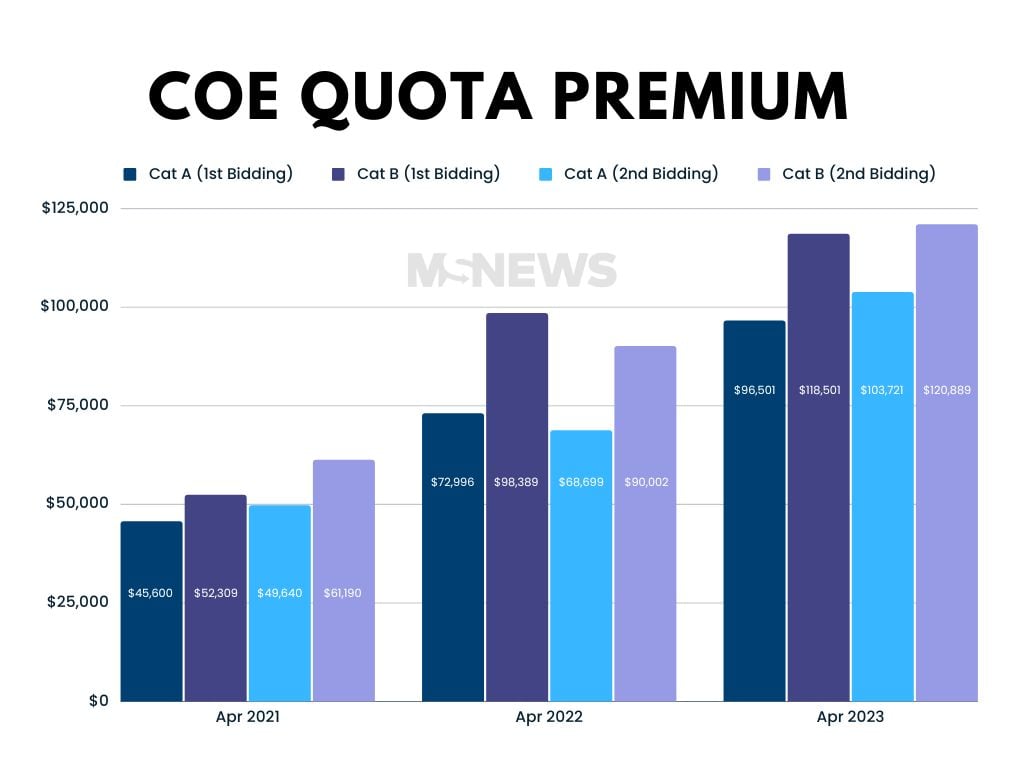
COE quota premiums soar in recent bidding rounds. Source: LTA.
According to data by LTA, premiums for first-hand cars in Singapore have increased across the board.
From a low of S$45,600 in Apr 2021, people are now paying around S$100,000 for their COE premium.
As such, COE prices have doubled in the mere span of two years.
COE premium hits S$152,000 for Open Category vehicles in October
The COE premium for Open Category vehicles reached an all-time high of S$152,000 at the start of this month.
This was an increase of S$7,360 from the last exercise in September.
In this category alone, the premium has been steadily on the rise since the start of the year.
The quota premium started at around S$107,889 in January, only to breach the S$150,000 benchmark nine months later.

COE quota premium for Category E (Open Category) vehicles has increased steadily since July. Source: LTA
In the latest round of COE bidding, the open category saw 261 bids received, which exceeded the 140 COEs set aside for the vehicle type.
Open-category COEs end up being used mainly for large cars though they can be used for any vehicle type, reported Channel NewsAsia (CNA).
In total, October’s bidding exercise saw 2,795 bids when there were only 2,010 COEs available.
You’d think that the constant sky-high prices are deterring people from buying cars, however, the numbers show otherwise.
In spite of the rocketing numbers, Singapore’s car population continues to increase.
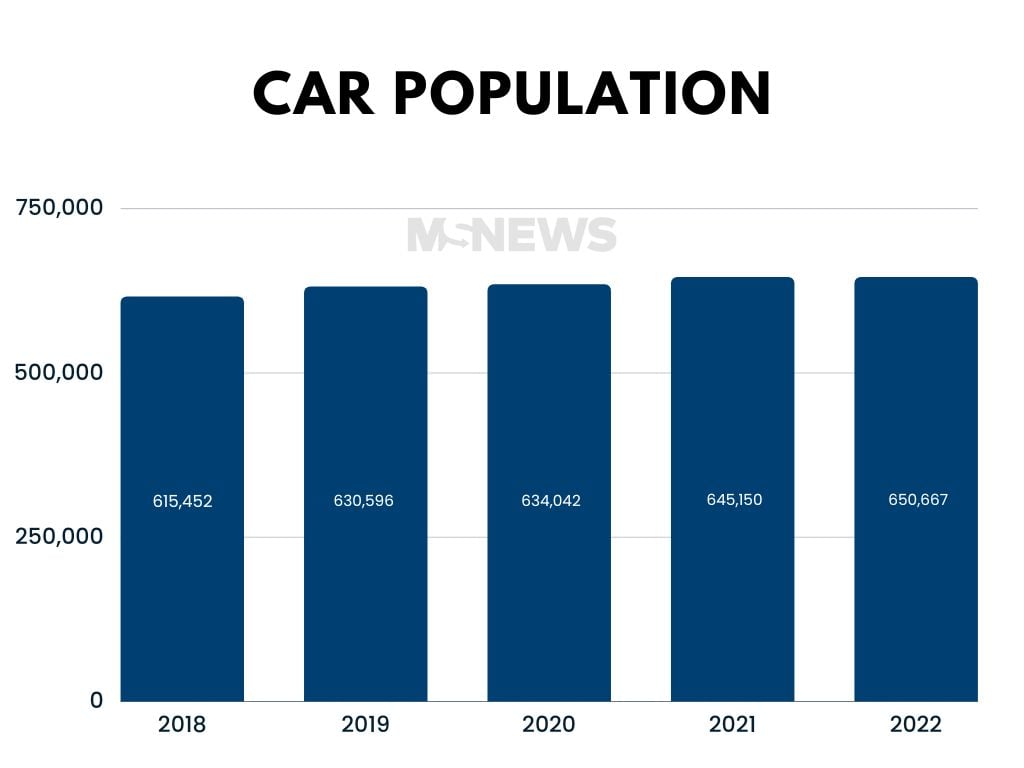
The number of cars on Singapore’s roads has continued to increase through the years. Source: LTA.
The good news? Singapore’s car population is increasing at a relatively controlled rate — likely thanks to COE.
COE introduced in 1990 to regulate booming vehicle population
The COE bidding system is not a new concept in Singapore, having been introduced by the Government in 1990.
According to Infopedia, Singapore’s car population was increasing at an alarming rate of 12 percent every year between 1975 to 1990.
As such, the Government saw the need to impose a vehicle quota system to regulate this growth.
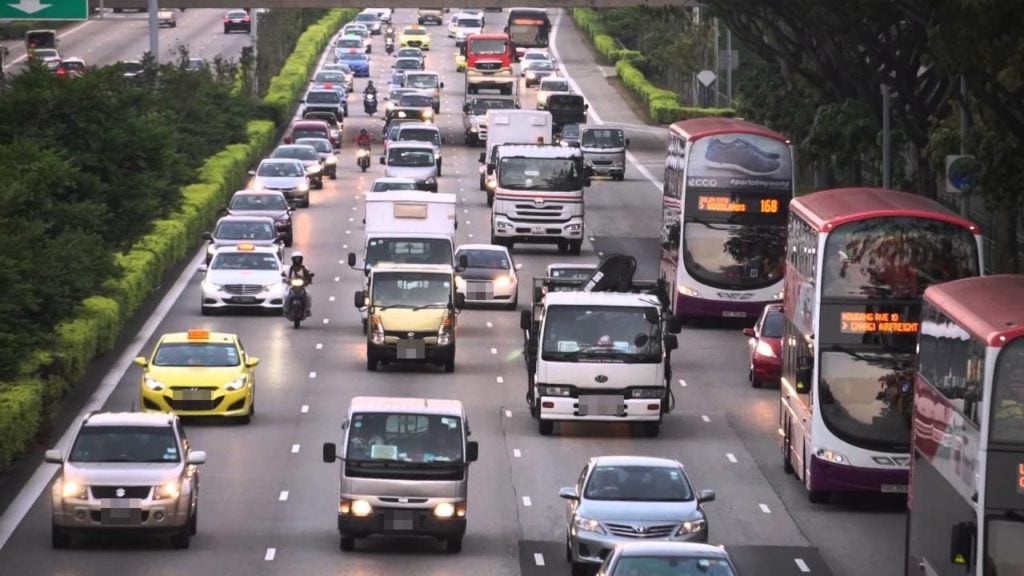
Source: Anton V on YouTube for illustration purposes only.
More than three decades later, COE is still very much relevant to Singaporeans, with car owners willing to pay hundreds of thousands of dollars just for the premium.
In fact, COE premiums for cars are at an unprecedented high this year, with values breaching the S$120,000 mark in April 2023.
These jaw-dropping values make us wonder — what’s driving these prices sky-high?
COE supply crunch initiates ‘bidding wars’
First, let’s take a look at the premiums that car owners are spending.
Based on the Motorist.sg website, car owners paid a whopping S$119,399 for their COE premium during the first bidding in May 2023.

Source: Motorist.sg
The Straits Times (ST) reported that the historical figures were due to brisk sales at Cars@Expo.

Source: Cars at Expo on Facebook
Additionally, car dealers expected fewer COEs available in the next three months.
Simply put, people want cars but there aren’t enough COEs to go around.
When the Singapore Government first introduced the COE in April 1990, the bidding was for 14,000 vehicles.
In April this year, there was a meagre total of 3,182 COEs up for grabs across all five vehicle categories.
Singapore’s ‘zero growth’ rule for private car population
As it stands, COE is so expensive in Singapore because it’s seen more and more as a rarity.
Aspiring car owners are participating in a bidding war for an item that fewer and fewer can get in the years to come.
At least, that’s what the trend shows.

The number of COEs up for grabs has significantly decreased since 2021. Source: LTA.
The reason for this supply crunch? Likely, Singapore’s zero-growth stance towards private cars that has been in place since 2018.
At the time, news reports cited “land constraints” as one of the major factors for the zero growth measure.
Five years later, the growth rate for cars remains at zero.

Source: AsiaBizz, for illustration purposes only.
However, the high demand and record-breaking premiums have recently forced the LTA to make a one-time adjustment to the quota.
CNA reported that there’ll be 24% and 15% increases in Category A and B respectively for the remaining five bidding exercises from May to July this year.
This is apparently due to expiring, non-extendable COEs that would make room for newer ones which aspiring car owners can bid for.
According to LTA:
LTA will bring forward the guaranteed deregistrations of 5-year non-extendable COEs which are due to expire when supply is projected to be higher and distribute them over the next few quarters.
As such, there should be an additional 6,000 COEs to be redistributed.
However, this does not alter the zero Vehicle Growth Rate on the overall car population.
If you’d like to find out more about the COE system and bidding exercise, visit the OneMotoring website here.
Car ownership in other countries
As it stands, COE seems to be doing its job in curbing the vehicle population in Singapore — especially if we compare our numbers with places like Thailand.
In November last year, The Nation reported that Bangkok had 10.67 million registered vehicles, of which over two-thirds were personal vehicles.
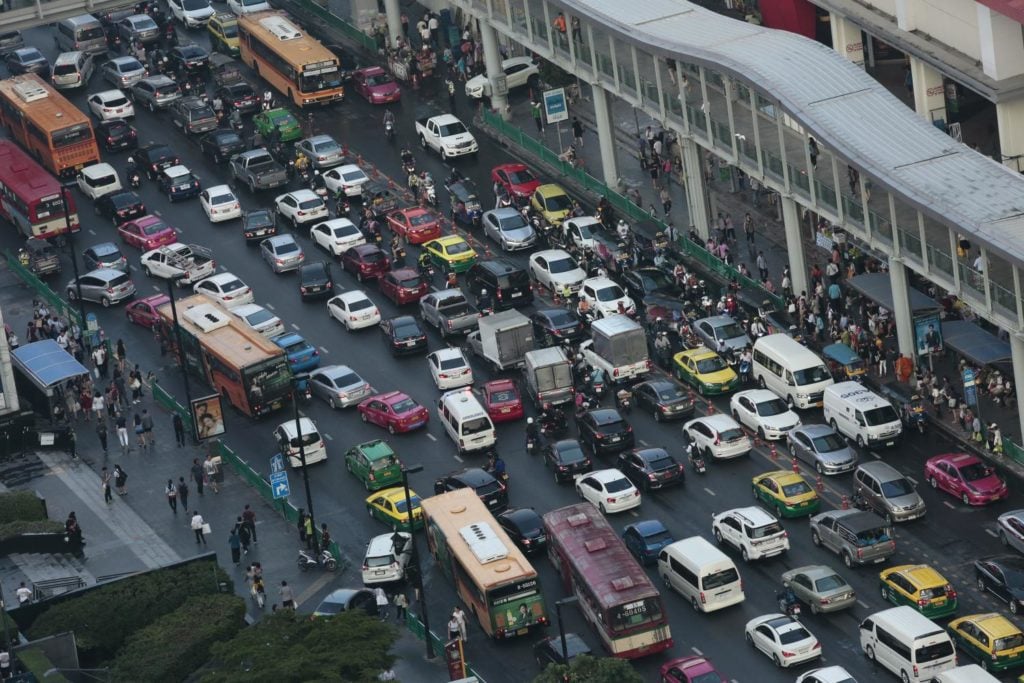
Source: Bangkok Post
At the time, the number of vehicles outnumbered the people residing in the Thai capital.
Compared to Bangkok’s 10 million, Singapore clocked in 995,746 registered motor vehicles in 2022.
Hence, the 1:5 ratio of vehicles to humans on our island state is comparatively, not too bad — considering that there were around 5.64 million people in Singapore at the time.

Source: Gov.sg
Needless to say, the retail price for cars is also much cheaper in Thailand.
To draw a quick comparison, a new Honda Civic Sedan that costs S$30,235.10 (THB 773,850) in Thailand is listed for S$89,999 in Singapore.
Similarly, the same model goes for about S$48,236 (IDR 533,000,000) in Indonesia.
With these prices, people in these countries don’t need to second guess their purchase as much.
Traffic jams are a global problem
In places like Bangkok where car ownership is not controlled, one can only imagine the dismal traffic situation.
The Nation reported that in 2017, a survey of Southeast Asian countries revealed that Bangkok had the worst traffic.

Source: Mashable
More recently, however, London was ranked as the world’s most congested city on Bloomberg.
Based on data by INRIX research, each driver in London spent 156 hours in traffic last year.
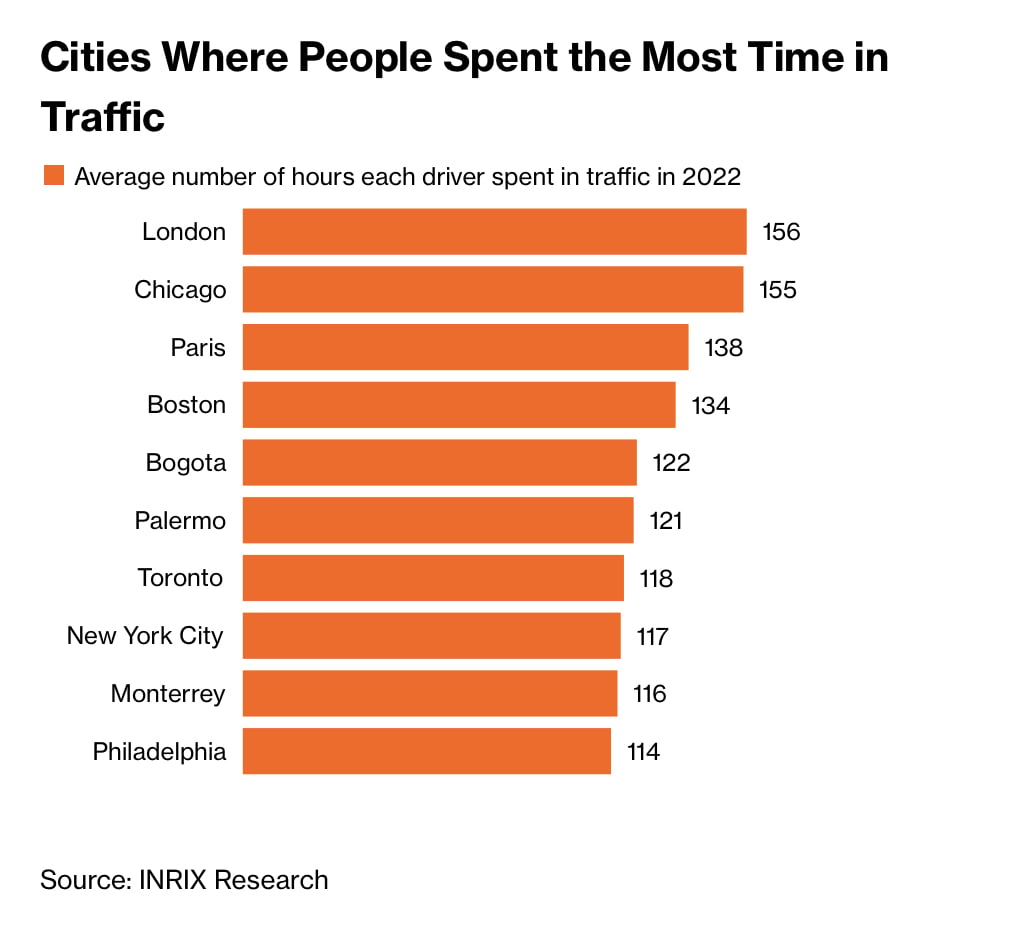
Source: Bloomberg
A report by TomTom Traffic Index also ranks London as the most expensive city for driving in 2022.
According to the index, London drivers spent about S$1,338 (GBP800) a year on fuel — of which S$334 (GBP200) was due to congestion.
The congestion in the English capital is so bad that drivers took around 36 minutes to travel 10 kilometres.
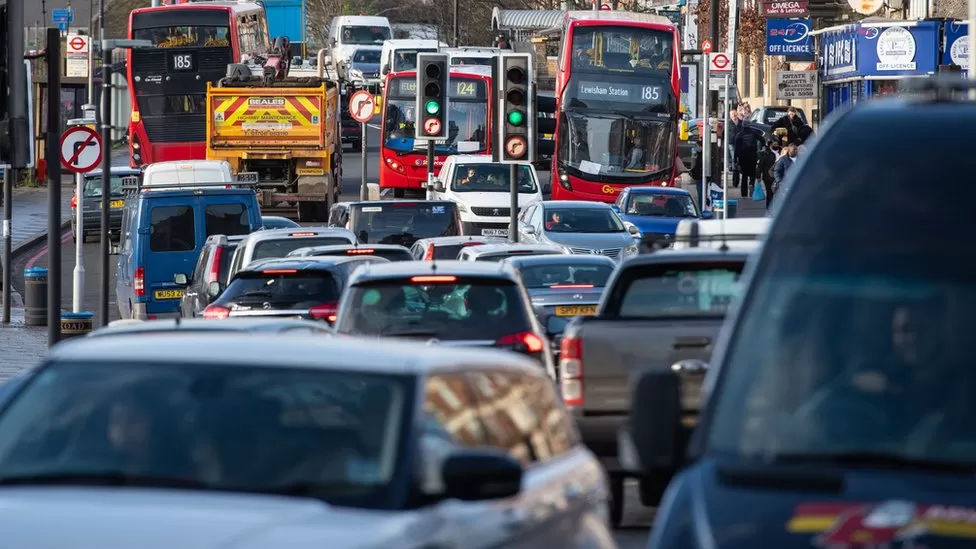
Source: BBC
Meanwhile, Singapore drivers took about 16 minutes to travel the same distance.
The fact that Singapore has not topped any of these lists bodes well.
Hence, it seems like despite the exorbitant premiums, the existence of COE is what keeps traffic congestion away.
This also positively impacts non-car owners, who won’t have to suffer through Bangkok-level jams.
COE is population control for cars
So perhaps having a quota is a good thing, to ease congestion in a tiny city-state like Singapore.
In a world without COE, more Singaporeans will likely own cars.
The tradeoff though? Everyone, both car owners and public commuters, will spend about an hour stuck in traffic when traveling to town.
In such a reality, it might make more sense to brave the MRT crowds.
Featured image adapted from KQ Boy on Unsplash for illustration purposes only.
